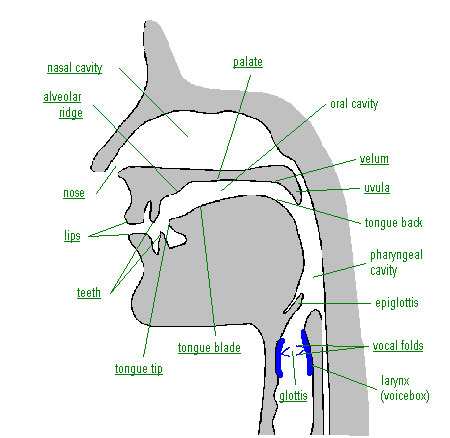Wow, isn’t it incredible?
By Dr. Judy Montgomery, CCC-SLP, Professor, Chapman University
This diagram shows the muscles and body parts in our chest, neck and head that enable us to speak. Air is pulled in through our nose and mouth (oral cavity) into the lungs. Oxygen is removed from the air and sent to our brain and blood; carbon dioxide is expelled back up the pharynx (throat). We can only speak on exhaled air. In the larynx (voice box), the vocal folds open or close depending on the sound produced, causing the airstream to vibrate. This vibrating column of air exits through the mouth uninterrupted to produce vowels, or interrupted to produce consonants. The interruptions are cause by momentary contact with our tongue, teeth, lips. The velum and uvula (parts of the soft palate) bunch up or relax to allow air to be re-directed to the nose. Sometimes the air even exits from our nose for the /m/, /n/ and /ng/ sounds! Our tongue is very important and all parts of it move to produce different sounds. It is the strongest muscle in our body for its size!! We only need to think of what we words we want to say, and the nerves and muscles move in all the right fine motor patterns we need! It is all automatic- in fact, you can’t do it if you think what muscle to move in what order.









